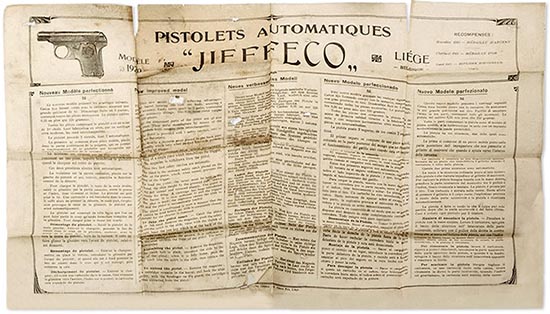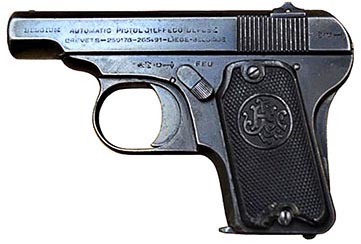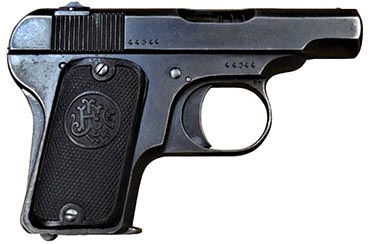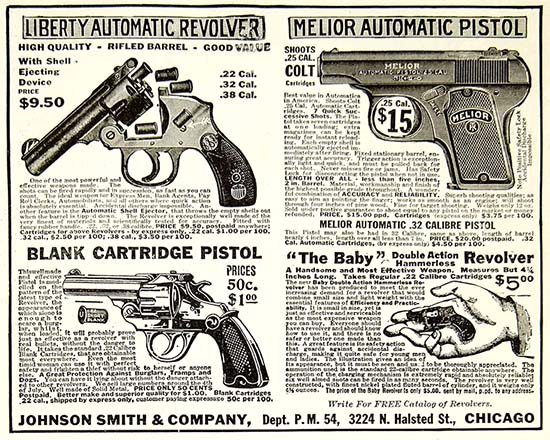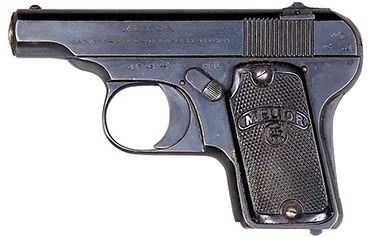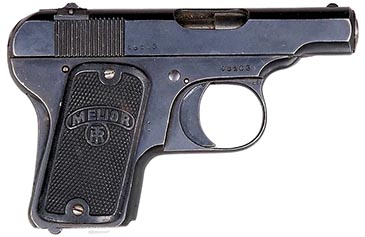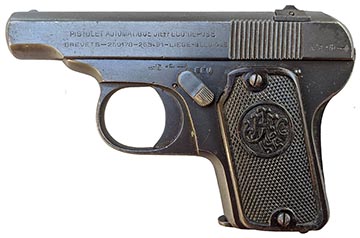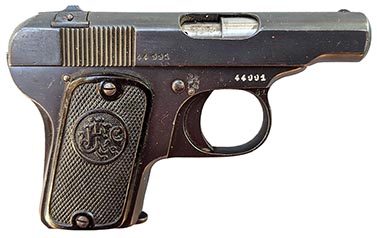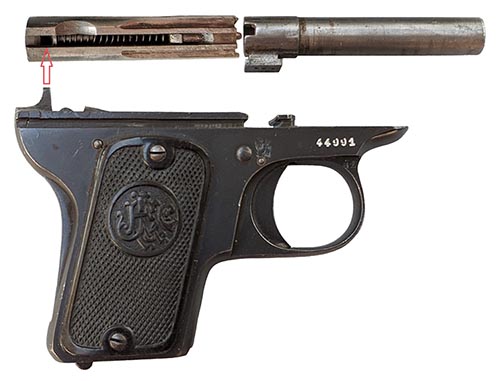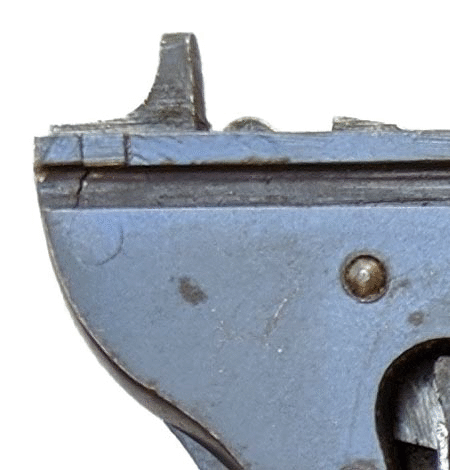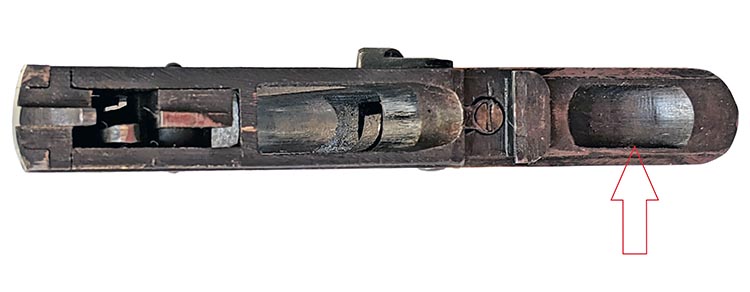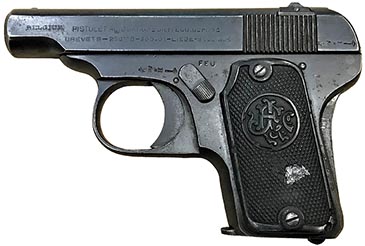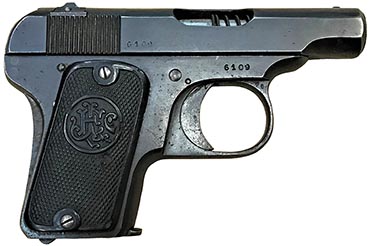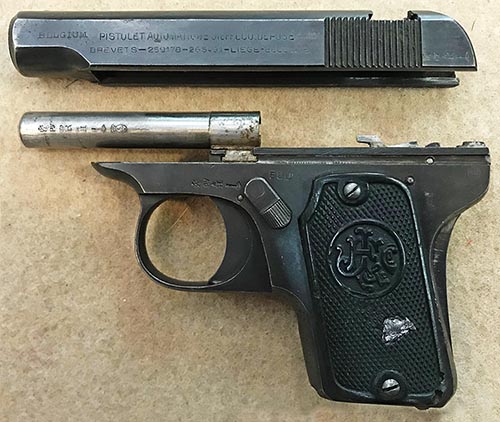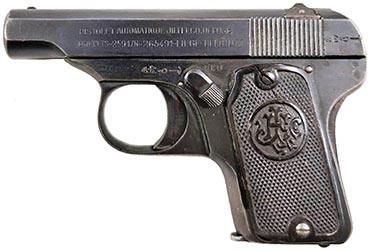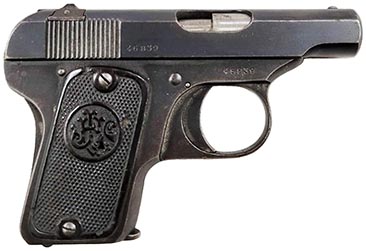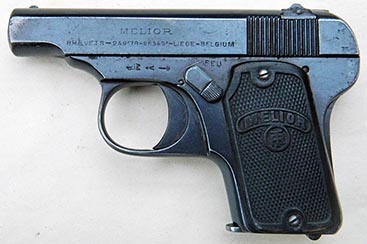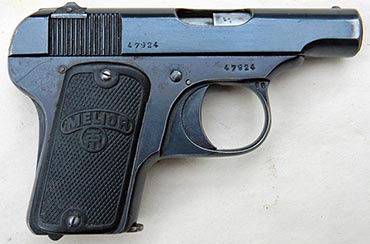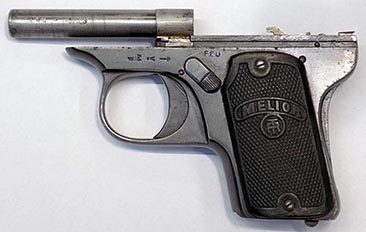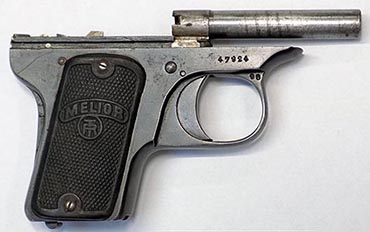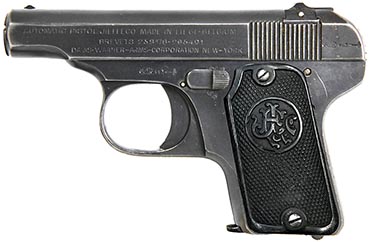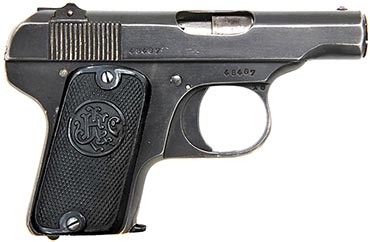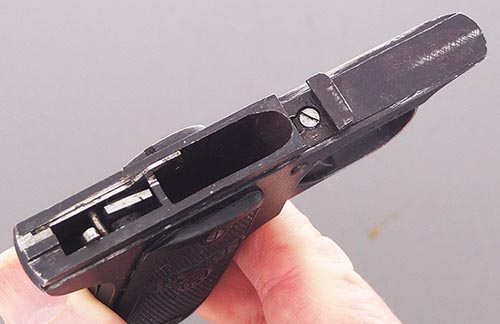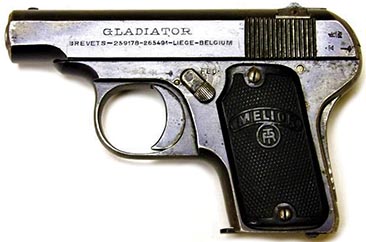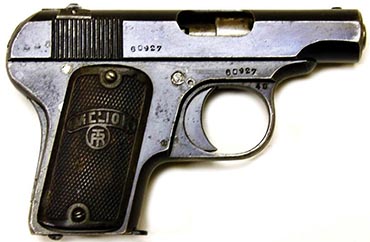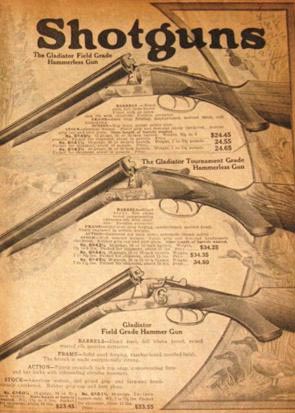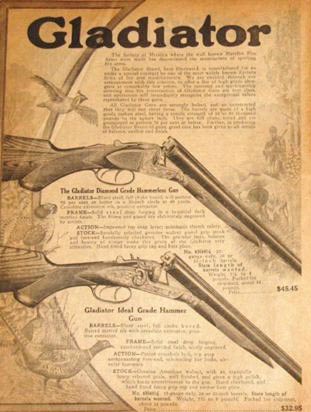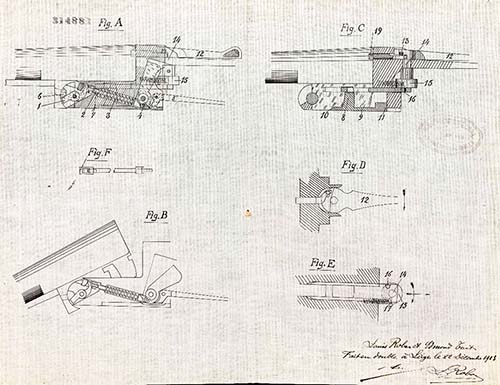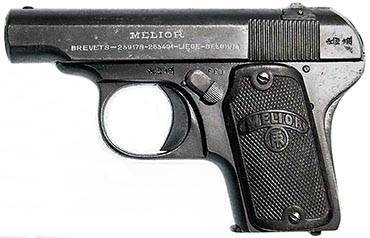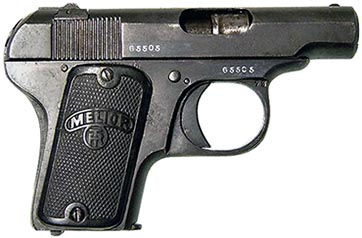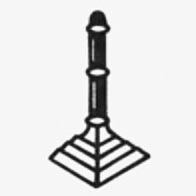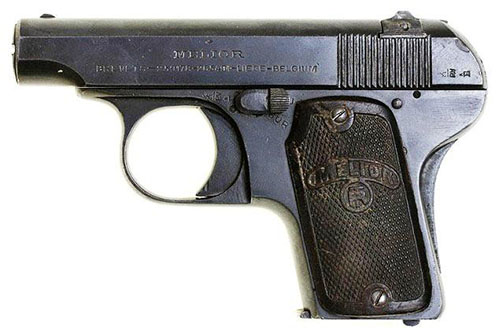 |
|||||||||||||||||||||||||||||||||||||||||||||||||||||||||||||||||||||||||||||||||||||||||||||||||||||||||||||||||||||||||||||||||||||||||||||||||||||||||||||||||||||||||||||||||||||||||||||||||||||||||||||||||||||||||||||||||||||||||||||||||||||||||||||||||||||||||||||||||||||||||||||||||||||||||||||||||||||||||||||||||||||||||||||||||||||||||||||||||||||||||||||||||||||||||||||||||||||||||||||||||||||||||||||||||||||||
|
The Model 1920 Melior, Jieffeco, by Vaclav Vriesen
The appearance of the Model 1920 pistols is nearly identical to that of the Model 1914 first variation type 5, except for the attachment of the grip plates and the logo on them. The appearance of this model did not change until 1925, when a thorough modernization took place, reflected in the third type, created on the basis of the patents, № 259178 and № 265491. The grips on the pistols of the Model 1920 were fastened with two screws, and the letters RK denoting the name of the company L. Robar Fils & L. de Kerckhove were replaced by the capital letters of the names of the creators of this pistol Louis Robar and Edmond Tart—RT—these letters superimposed on each other form a strong union. Indeed, Edmond Tart remained loyal to Robard's company until the end of his life.
The earliest documented Model 1920 pistol with the trademark Jieffeco has the serial number 44344, and was sent to the English or American market. It has the upper line of the inscription on the left side of the slide in English and the additional marking "BELGIUM" at the front: BELGIUM AUTOMATIC PISTOL JIEFFECO DEPOSE
This is the only documented pistol of the 1920 model with an English-language export marking on the slide. As mentioned earlier in the article about the Model 1914 Louis Robar pistols, the first synthesized image of a pistol with grips that are attached with two screws appeared in the instructions for Jieffeco pistols in 1920. The earliest known image of the Melior Model 1920 pistol was published in the catalog of the Johnson Smith & Co. in Chicago in 1921.
MELIOR
The Model 1920 Type 1 Jieffeco pistols with serial numbers 44875, 44991, 45934, and 46627, intended for the French and Belgian markets, have a two-line inscription in French: PISTOLET AUTOMATIQUE JIEFFECO DEPOSE
The Jieffeco pistol with the serial number 44991 has a fundamentally new technical solution for the ejection of cartridge cases. This is a high projection in the back of the frame located in the center, which replaced the cartridge ejector invented for the first model of 1914 in the interval between pistols with serial numbers 36953 and 38434. This protrusion formed a backstop for the striker spring and guide rod; the striker in turn pushed out the cartridge case and served as an ejector. This design made it possible to reduce technical operations in manufacture and thereby optimize production.
Later, Robar returned to the previous design of the cartridge case ejector, due to the fact that this new design turned out to be less reliable. The impact of the slide on this backstop caused cracks to appear in the frame in some cases, as you can see in the enlarged photo.
On Model 1914 pistols, this middle part, slightly protruding above the frame, only serves as a guide for the breech block and is attached to the frame with two pins; whereas on the new design, this middle protrusion is attached with a single pin. These pins are quite noticeable on pistols, so it is easy to determine the approximate number of pistols of this experimental model by the number of pins visible in the frame. It is reliably established that this early style of protrusion appeared from the beginning of production of the Model 1920, that is, in the interval between the serial numbers 44012 and 44344. The production of the experimental model with a protrusion occurred in the interval between serial numbers 45934 and 46627. Also, the Jieffeco pistol with the serial number 44991 has a milled depression in the frame beneath the barrel to reduce the weight of the pistol.
Of the investigated pistols, only two Type Two Jieffeco, with serial numbers 6109 and 46627, have a two-line inscription in French on two lines, and have an ejector of the early type. These pistols are in the range of serial numbers 45934 variation 1 and 46839 variation 2. BELGIUM PISTOLET AUTOMATIQUE JIEFFECO DEPOSE
Slides «BELGIUM» As mentioned above, the Jieffeco Model 1920 pistols after the well-known serial number 46839 have the word "Belgium" in English on the second line of the slide inscription, and the first line is written in French :
During the entire study of Model 1920 pistols, only five Jieffeco pistols with such an inscription on the slide were found. These pistols have serial numbers 46839, 46900, 47050, 47091, and 57899. All Model 1920 Melior pistols, starting with the well-known serial number 46839, have the word "BELGIUM" in English in the second line : MELIOR
The word "BELGIQUE" in French in the second line of the slide inscription was never used again. As mentioned above, Melior pistols, starting with the well-known serial number 47924 , have an early ejector for extracting cartridges case, and this design did not change right up to the end of production.
Around the end of 1920 or early 1921, the main distributor of Louis Robar, the "Janssen Freres" company, ordered a large batch of pistols with its Jieffeco brand for the Davis-Warner Arms Corporation for export to America. For this purpose, a three-line inscription was used on the pistols : AUTOMATIC PISTOL JIEFFECO MADE IN LIEGE-BELGIUM
A total of 34 pistols with this marking on the slide were examined. Among these studied Jieffeco pistols that occur in the interval between the serial numbers 47924 and 49945, there is only one pistol with the trademark Melior with the serial number 48623. That is, presumably the number of pistols sent for the Davis Warner arms corporation was approximately 2000 pieces. After this big American contract, almost all pistols of the 1920 model were released with the Melior brand, as well as one Jieffeco pistol with the serial number 57899, which was mentioned above, and a pistol issued with the Gladiator trademark, which has the serial number 60927.
Model 1920 Type 3 pistols do not have a milled groove on the frame under the barrel. The lightweight frame was not made in the interval between the serial numbers 50948 and 60927.
The pistol of the third variation of the 1920 model with the serial number 60927 issued under the Gladiator trademark has a two line inscription on the slide : GLADIATOR
This pistol does not have a milled groove on the frame under the barrel, and all pistols of this type are made with a heavy frame until the end of production. It is not yet known exactly who registered the Gladiator trademark in Belgium, but in Italy, the Belgian double shotgun with the same name was sold by the company "Sindacato Anglo-Italiano di Armi e Sports" in 1911 and 1912. And in America, the Belgian double shotgun with the same name was supplied to the company "Meriden Fire Arms" and was presented in the catalog of the trading company Sears, Roebuck & Co. in 1918.
Pistols of the 1920 model of this variation, starting with the well-known serial number 65505 , do not have the "Perron" sign, which marked the barrels of the frame and the slides of the pistols. This change occurred in the range of serial numbers 64300 and 65505.
The "Perron" is the city symbol of Liège. The Perron proof was used on pistols until 1924. On barrels, this indicates that the barrel locking mechanism was not weakened during manufacture. On frames and slides, this indicates that the fit and function are accepted. In the frames and slides, the "perron" proof complements and completes the "PV" proof. This proof was used between 1903 and 1924.
The production Model 1920 pistols ended in the range of serial numbers 66195 and 66396. Starting with the well-known serial number 66396, the production of the third variation of pistols created under the Belgian patents № 259178 of 1913 and № 265491 of 1914 began.
|
|||||||||||||||||||||||||||||||||||||||||||||||||||||||||||||||||||||||||||||||||||||||||||||||||||||||||||||||||||||||||||||||||||||||||||||||||||||||||||||||||||||||||||||||||||||||||||||||||||||||||||||||||||||||||||||||||||||||||||||||||||||||||||||||||||||||||||||||||||||||||||||||||||||||||||||||||||||||||||||||||||||||||||||||||||||||||||||||||||||||||||||||||||||||||||||||||||||||||||||||||||||||||||||||||||||||
|
|||||||||||||||||||||||||||||||||||||||||||||||||||||||||||||||||||||||||||||||||||||||||||||||||||||||||||||||||||||||||||||||||||||||||||||||||||||||||||||||||||||||||||||||||||||||||||||||||||||||||||||||||||||||||||||||||||||||||||||||||||||||||||||||||||||||||||||||||||||||||||||||||||||||||||||||||||||||||||||||||||||||||||||||||||||||||||||||||||||||||||||||||||||||||||||||||||||||||||||||||||||||||||||||||||||||
|
Copyright 2021 by Vaclav Vriesen. All rights reserved. |
|||||||||||||||||||||||||||||||||||||||||||||||||||||||||||||||||||||||||||||||||||||||||||||||||||||||||||||||||||||||||||||||||||||||||||||||||||||||||||||||||||||||||||||||||||||||||||||||||||||||||||||||||||||||||||||||||||||||||||||||||||||||||||||||||||||||||||||||||||||||||||||||||||||||||||||||||||||||||||||||||||||||||||||||||||||||||||||||||||||||||||||||||||||||||||||||||||||||||||||||||||||||||||||||||||||||
|
|
|||||||||||||||||||||||||||||||||||||||||||||||||||||||||||||||||||||||||||||||||||||||||||||||||||||||||||||||||||||||||||||||||||||||||||||||||||||||||||||||||||||||||||||||||||||||||||||||||||||||||||||||||||||||||||||||||||||||||||||||||||||||||||||||||||||||||||||||||||||||||||||||||||||||||||||||||||||||||||||||||||||||||||||||||||||||||||||||||||||||||||||||||||||||||||||||||||||||||||||||||||||||||||||||||||||||
